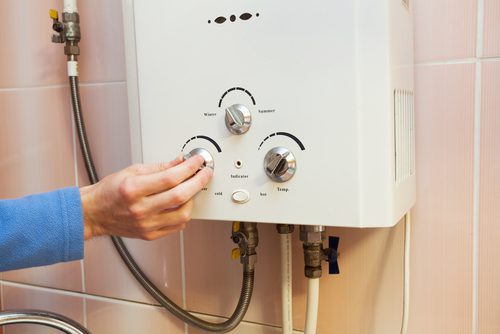Easy Steps to Caring for Your Home's Hot Water SystemExpert Advice on Maintaining Your Home's Hot Water System
Easy Steps to Caring for Your Home's Hot Water SystemExpert Advice on Maintaining Your Home's Hot Water System
Blog Article
Everyone will have his or her own idea when it comes to What Kind of Maintenance Do Water Heaters Need?.

Warm water is vital for day-to-day comfort, whether it's for a revitalizing shower or washing recipes. To ensure your hot water system runs effectively and lasts longer, normal maintenance is vital. This short article gives practical ideas and understandings on just how to maintain your home's warm water system to avoid interruptions and pricey repairs.
Introduction
Keeping your home's warm water system could seem complicated, yet with a few basic actions, you can ensure it operates efficiently for years to find. This guide covers whatever from recognizing your warm water system to DIY upkeep tips and knowing when to employ professional assistance.
Relevance of Maintaining Your Warm Water System
Routine upkeep not just prolongs the life-span of your hot water system however additionally guarantees it runs efficiently. Ignoring upkeep can bring about decreased effectiveness, greater power expenses, and also premature failure of the system.
Indicators Your Hot Water System Needs Upkeep
Knowing when your hot water system requires focus can prevent major problems. Keep an eye out for signs such as inconsistent water temperature level, weird sounds from the heating system, or rusty water.
Understanding Your Hot Water System
Prior to diving right into upkeep tasks, it's handy to understand the fundamental elements of your warm water system. Commonly, this includes the water heater itself, pipes, anode poles, and temperature controls.
Monthly Maintenance Tasks
Routine regular monthly checks can aid capture small issues before they escalate.
Purging the Hot Water Heater
Purging your water heater removes sediment buildup, improving effectiveness and extending its life.
Checking and Replacing Anode Rods
Anode rods stop rust inside the container. Checking and replacing them when worn is important.
Inspecting and Adjusting Temperature Settings
Adjusting the temperature settings ensures optimal efficiency and safety.
DIY Tips for Upkeep
You can execute numerous upkeep jobs on your own to keep your hot water system in top problem.
Looking for Leaks
Frequently inspect pipes and links for leaks, as these can lead to water damage and greater costs.
Checking Stress Relief Valves
Testing the pressure safety valve guarantees it works properly and protects against extreme pressure buildup.
Insulating Pipelines
Shielding warm water pipelines minimizes warm loss and can save power.
When to Call a Specialist
While DIY upkeep is valuable, some issues need expert competence.
Complex Issues Requiring Professional Aid
Instances consist of significant leakages, electric issues, or if your water heater is regularly underperforming.
Routine Professional Upkeep Conveniences
Specialist maintenance can consist of detailed evaluations, tune-ups, and ensuring conformity with safety and security standards.
Verdict
Routine maintenance of your home's hot water system is essential for performance, durability, and price financial savings. By complying with these tips and understanding when to seek professional aid, you can guarantee a reliable supply of hot water without unforeseen disruptions.
How to Maintain an Instant Hot Water Heater
Before tinkering with your hot water heater, make sure that it’s not powered on. You also have to turn off the main circuit breaker and shut off the main gas line to prevent accidents. Also turn off the water valves connected to your unit to prevent water from flowing into and out of the appliance. 2. When you’re done, you have to detach the purge valves’ caps. These look like the letter “T” and are situated on either side of the water valves. Doing so will release any pressure that has accumulated inside the valves while at the same time avoid hot water from shooting out and burning your skin. 3. When the purge valves’ caps are removed, you have to connect your hosing lines to the valves. Your unit should have come with three hoses but if it didn’t, you can purchase these things from any hardware or home repair shops. You can also get them from retail stores that sell water heating systems. Read the user’s manual and follow it to complete this task properly. When the hosing lines are connected, open the purge port’s valves. 4. You should never use harsh chemical cleaners or solutions when cleaning your unit. Make use of white vinegar instead. It should be undiluted and you’ll probably use about 2 gallons. 5. Now flush your water heater. This task should probably take about 40 minutes. We can’t give you specific directions for this because the procedure is carried out depending on the type, model and brand of your heater. With that being said, refer to the user’s manual. 6. When you’re done draining the unit, you have to turn off the purge port valves again. Remove the hosing lines that you earlier installed on each of the water valves. Put the valve caps (purge port) back in their respective places and be very careful so as not to damage the rubber discs that are found inside these caps. 7. Now that everything’s back in place, check your user’s manual again to find out how to reactivate your water heating system. 8. Once it is working, turn one of your hot water faucets on just to let air pass through the heater’s water supply pipes. Leave the tap on until water flows smoothly out of it. https://www.orrplumbing.com/blog/2014/september/how-to-maintain-an-instant-hot-water-heater/

I am very interested by Tips on Maintaining a Water Heater and I hope you enjoyed reading the entire blog entry. Sharing is good. Helping people is fun. We thank you for reading our article about Tips on Maintaining a Water Heater.
Get Your Estimate Now Report this page